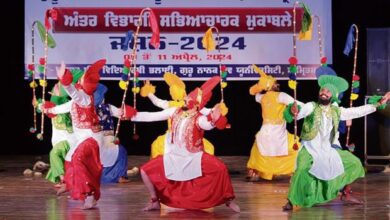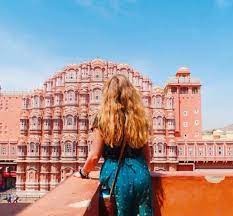Discover Delhi’s Undiscovered Treasures With These 5 Cost-Effective Ideas
Charming Delhi on a Shoestring: 5 Cost-Effective Strategies for the Capital Visit
Delhi captivates the senses unlike any other city, with its diverse street culture, bustling bazaars, and historic landmarks. But underneath the glistening façade of opulent attractions and posh cafés, there’s a vibrant capital city teeming with astonishing charm that’s within reach even for those with little means. Take advantage of these Delhi tricks to go to amazing India without having to pay for pricey extras.

1. Treasures of Street Food
The vibrant bazaars of Delhi are brimming with flavorful street cuisine that will tantalise taste buds without breaking the bank. Precisely follow the scents of ginger and garlic emanating from the small “gullies” behind the well-known Jama Masjid or Nanini Chowk bazaar, where you may find delectable veggie-stuffed parathas frying dramatically on smokey tawas for a mere 20 rupees each. Try the Old Famous Jalebi Wala store, which has been making sweet orange pretzel swirls since 1884 AD and is still managed by the heirs of the Halwai family today! They use antique iron cauldrons for their cooking.
Passionate Delhi foodies are now offering specialist excursions that go delectably into lesser-known but exceptional breakfast places hidden in unassuming nooks, going beyond the typical chaat vendors. Like the sixty-year-old Hira Lal Chaap Wali, who pulls customers from fifty kilometres away despite having no ostentatious signboards or an internet presence, yet is packed with office workers and serves sumptuous Nihari goat stew on weekends with fluffy sheermal bread! For an exquisite insider introduction to Delhi’s remarkable street food havens, all you need is an inquisitive taste, a conversational demeanour, and an empty stomach ready to explore the sensory mysteries that remain passionately boiling despite the city’s sophisticated malls expanding rapidly.
2. The City Walk in Delhi
In contrast to seeing the monuments quickly off a TripAdvisor checklist, Delhi’s ancient character is magnificently unveiled via well-planned excursions that reveal subtle mysteries still concealed behind intimidating facades for those going leisurely with knowledgeable storytellers. The Cond Nast award-winning Delhi City Walks delve deeply into bustling neighbourhoods and urban villages that few tourists venture to, exposing the remarkable city’s seaside bazaars, historic water rituals, and even the fascinating backstories of exiled Begums, who are surprisingly hidden just a few streets behind opulent presidents’ estates.
Go with ardent creator Gerish Khemani through dilapidated yet atmospheric Havelis, where interesting ittars are dabbed by seventh-generation perfumers. Explore winding hallways that slip under revered neem trees in search of Sufi shrines that demonstrate syncretic togetherness beyond contentious headlines. Experience the scents of exotic spices inside the century-old Khari Baoli Bazaar, which offers rich garam masalas that have been served at weddings across India since the Mughal Empire. Such encounters have a much deeper impact than just touring wonderful structures on the surface!
3. Tours via Cycle Rickshaw
When one chooses open-air cycle rickshaws over cosy tour buses, one may discover unique viewpoints that make exploring intimate neighbourhoods almost cost-free. Strong rubber-tired bicycle carts, driven by young vendors eager to show off their cherished backstreets, continue to travel ancient Delhi’s narrowest gallis. These carts have withstood the Western invasion of infrastructure.
Set out early in the morning on erratic traffic circles in search of the golden light of dawn to illuminate the softly melancholic tableaus of the ancient city. Devoted followers of Shiva tie marigold garlands and puffed rice to 600-year-old Banyan trees that are still revered by the locals,, whose ancestors spent their whole lives being fed by the benevolent shade of the nodding behemoth. Hear chilling tales of horrific pre-Partition street fights that sprang out suddenly yet ended amicably across many generations as well, thanks to the oral tradition’s rich lyrical humanism.
Go from this amazing moving museum with a sense of gratitude for getting behind-the-scenes looks at exclusive neighbourhoods that are still living relatively unaffected by misunderstandings and new, sophisticated multiplexes in Delhi.
4. Interludes in Lush Gardens
Include pleasant garden stops in between hammering pavements for revitalising green treatment that will reset stressed senses. From the lush Lodhi Gardens, which are exquisitely sprinkled with Mughal tombs, to the more sedate Nehru Park Lake retreat, which provides free paddle boating next to dancing fountains, Central Delhi offers amazing lung areas for leafy picnics. The remarkable Garden of Five Senses stretches 30 acres southward and has over 20 different species of fragrant plants that have been painstakingly named for learning, as well as open yoga fields and contemplative bamboo bridges. All of these areas are free to enter for stressed individuals looking to nurture their inner wellbeing.
By Metro train, you may go even further to the vast Sanjay Van urban forest, which is surprisingly prospering at a short distance from Connaught Place. There, you can find yourself surrounded by peaceful bird sounds and winding hiking paths that make it feel like you are miles away from the hectic metropolitan life outside! Sink your toes into the friendly meadows here, too easily taken for granted but nevertheless thriving devotedly, so every kind of nature enthusiast finds soft sanctuary, before the rushing torrent of humankind intensity takes one away again.
5. Discovering the History of Nizamuddin Basti
Without a heartfelt absorption in the ancient Hazrat Nizamuddin community, which has been fervently embracing music traditions that cut over all religious boundaries while whirling around the revered Sufi saint’s ethereal marble mausoleum for seven centuries, no homage to the Delhi Trail feels complete. Step away from the bustle of Mathura Road and enter the remarkable former village settlement, which was founded in the early 14th century and is still home to over 5000 people. The area is so naturally populated that there are no signs or maps indicating your location; it is a globally recognised precious heritage zone and a popular tourist destination.
Stroll leisurely down busy lanes, past amiable textile vendors who gladly direct you to the 15th-century Baoli stepwell ruins, and arrive, teary-eyed, at the saintly successor’s umbrella-topped tomb, which is perpetually covered with flowers. Next, you will see young people singing passionately beside the fountains where Amir Khusrau first played hypnotic qawwalis for his beloved mentor,, Hazrat Nizamuddin Auliya. Through stirring poetry and rhythms, these youths have been harmonising cultures for seven centuries, ensuring that everyone will always have access to these potent spiritual legacies for generations far beyond times of turbulent tides—that is, for those who value soul privileges over material wealth alone.
In order to fully appreciate Delhi’s remarkable living tapestry, which spans from fiery alleys where potato parathas are transported to verdant lawns shaded by wise trees, we must slow down just enough to notice the profound little everyday miracles that continue to appear abundantly amidst the city’s magnificent monuments and busy intersections.







